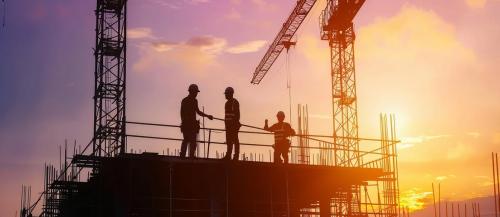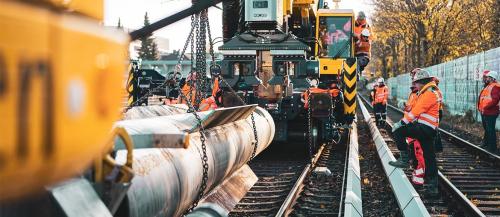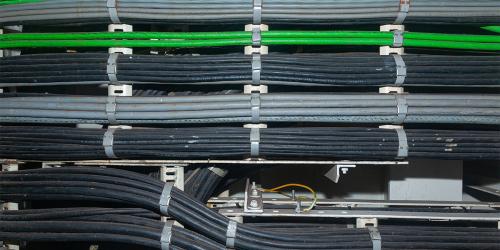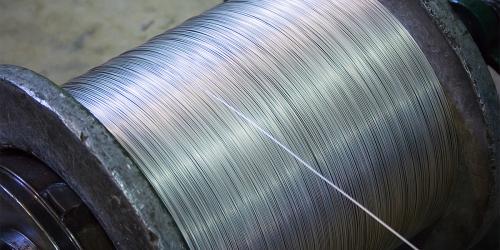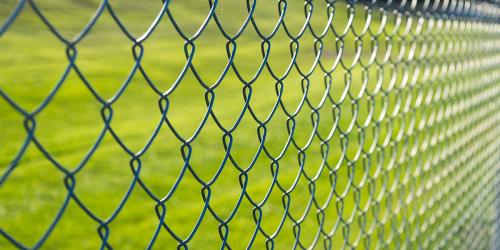As a company that specialises in stainless steel products, we know a lot about it, including the way it is made and what it is used for, but do you? Stainless steel is used all around the world for various purposes, whether that be for architectural structures or the knives and forks you find in your cutlery drawer. In this blog post, we are going to give a brief overview of how stainless steel is made before it ends up in common appliances in your home, and why it is so popular.
How Is It Made?
Stainless steel is an iron and chromium alloy, that must include 10.5% chromium to form its composition. Although these on their own will create a robust, and functional alloy, other metals and gasses can further be added to increase corrosion resistance, temperature resistance, strength, flexibility, and more.
Some of the most popular added elements include nickel, carbon, molybdenum, copper, manganese, and nitrogen. When different percentages of these are added into the alloy, a range of stainless steel grades are produced, which we will explore later in the post.
1. Melting
Electric arc furnaces (EAF) have become a popular way of melting metal, instead of traditional blast furnaces that contribute to carbon emissions. At the start of the process, scrap pieces of metal and other elements are melted in an EAF, to create a molten, liquid substance. Depending on the grade of steel, different temperatures will be used to melt the metals, however, they will all be melted down until they reach liquid form. Generally, the metal will be heated for around 8 to 12 hours.
2. Remove carbon
Despite carbon adding to the strength of iron, too much of it can cause problems in the long run. A high amount of carbon can lead to issues such as carbide precipitation, which causes the alloy to become weak during welding processes. To remove the carbon, two methods are used, Argon Oxygen Decarburization (AOD) and Vacuum Oxygen Decarburization (VOD).
AOD is the method of injecting an argon gas mixture into the melted steel. By completing this step after melting, the level of carbon is reduced, without affecting other important elements. The alternative method is VOD, in which the molten steel is moved to another chamber, where heat is applied and oxygen is injected. Once this is finished, a vacuum is used to remove the gases in the chamber to lower the carbon content.
3. Tuning
After the level of carbon is reduced, the metal needs to undergo a testing process to ensure the steel composition meets the desired standards. To do this, the metal’s temperature and chemistry are balanced and homogenised.
4. Shaping the steel
Next, the steel will be cooled and sculpted into the chosen shape, using various processes and techniques to achieve the final product. The most well-known shapes of stainless steel include blooms, billets, slabs, tubes, and rods.
After the metal has been formed into these shapes, they generally undergo different procedures to produce the final product or function. For example, slabs are made into strips and sheets, whilst blooms and billets are created into bars and wires.
5. Rolling method
There are two common rolling methods to shape the steel, hot rolling and cold rolling. Hot rolling involves heating the metal at temperatures higher than the recrystallisation point of steel. This enables the steel to become soft enough to mould, which will be rolled through a mill until it has reached its desired thickness. On the other hand, cold rolling uses temperature points below recrystallisation, which creates a more precise and uniform finish. However, with cold rolling, the steel structure is more susceptible to alteration and may need heat treatment later on to recrystallise the steel.
6. Heat Treatment
Annealing is the process of heating and cooling, in which the steel will undergo a series of cycles to soften the metal and lessen stress.
7. Descaling
During the process of shaping the steel, scale can appear on the surface, which can impact the functionality and durability of the product. To remove the scale, the steel can be placed in an acid bath or can go through another heating/cooling cycle in an oxygen-free environment. By removing the scale, the steel will have excellent corrosion and stain resistance, which is what is known for.
8. Cutting
After these steps, the steel is ready to be cut! It can be cut with a range of mechanical equipment including guillotine knives, circular knives, and punching with dies. For more precise and intricate shapes, flame or plasma cutting can also be used.
9. Choice of finish
The final step in the process is the finishing, whether that is matt or polished. Some of the most common finishing techniques include sandblasting and belt grinding, buffing, and polishing.
Stainless Steel Grades
Although stainless steel must contain at least 10.5% chromium, different grades will have different alloy compositions to achieve their own qualities. As stated above, stainless steel can be mixed with other elements to change the strength or malleability of the material. There are two popular stainless steel grades, 304 and 316, which are used for industrial and commercial purposes.
Grade 304 has a metal composition of 18-20% chromium and 3-10.5% nickel, which makes this grade malleable and corrosion-resistant. It is generally used for kitchen appliances, fasteners and fixings, as well as architectural structures such as lifts. Grade 316 has a similar composition, but with 2-3% molybdenum added, making it resistant to a larger range of chemical solvents. This grade is used for marine equipment, commercial kitchens, and industrial storage. We offer both of these stainless steel grades on our website. Depending on what you’re using stainless steel for, we recommend researching the many different grades so you can acquire the most appropriate one!
Why Is It Popular?
Stainless steel is used both by the industrial and consumer sector, as it provides a wide range of benefits including its resistance to corrosion, high durability and strength, and polished appearance. It is also a 100% recyclable product, which provides many sustainable and eco-friendly advantages. In the making of stainless steel, most products will contain about 60% of recycled steel, which is an efficient way of keeping production in motion.
We offer an extensive range of stainless steel products on our website, from fasteners and fixings to gardening and home products. Please feel free to browse our catalogue today or if you would like further information, call us on 03330 117818 or email [email protected].


